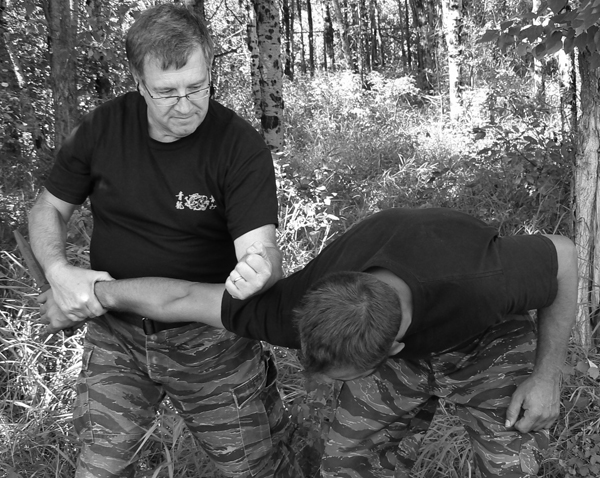This is the last in my series of articles on litigation that are related to training. Here, the overriding problem is officers are most often taught a series of generic techniques, many of which have their basis in Asian martial arts. As well, they are typically taught what to do (i.e.;, this is how you apply the technique) but not what not to do, or the result of doing the techniques incorrectly; they are also not given alternatives should the initial application of the technique fail.
- Inherently dangerous techniques. In one instance, officers were taught to deliver multiple knee strikes to the groin to bring the ‘client’ under control. An officer attempted to remove a bystander from the scene of a house fire by approaching him from behind and grabbing the bystander’s arm. Taken by surprise, the bystander pulled his arm away causing the officer to deliver three full force knee strikes to the bystander’s groin – as he was trained to do. The results were a ruptured testicle that required immediate surgery and a permanent disability. In this case, minimum resistance resulted in an almost fatal level of injury.
- Techniques requiring client compliance. I have seen the results of this problem quite often in my expert work. Techniques in training are applied to partners that are offering minimal resistance (e.g., “You take it easy on me and I will do the same; this way we easily get through the course). While this approach is fine when first learning a technique, the officers have to be able to handle resistance in order to gauge their understanding and ability, prior to using it ‘for real’. One case involved a suspect ‘moderately’ resisting being handcuffed. That is, he was non-combative, but constantly pulled his hands away as the cuffs were being applied. The officer, not knowing how to deal with the resistance pushed the suspect to the floor and had several other officers ‘dog pile’ on him. The force from these impacts resulted in the suspect sustaining a broken nose, two fractured ribs, and a lawsuit for excessive use of force.
- Too complicated. Here, an officer was taught a restraint and take-down to safely handcuff and search a client on the ground. The problem was the method required six steps to execute. When operating under stress, we can often only recall simple techniques that utilize gross motor movements. Half way through applying the handcuffs, the technique failed. The officer panicked and the suspect struck him in the face with the free handcuff. The resulting injury was a cracked eye socket and permanent partial loss of vision.
- Techniques that do not work. In one case I wrote opinion on, the in-house instructor was teaching restraint methods that she learned from a series of instructional videos in an online course. Not understanding if the techniques were legitimate or not (they weren’t) the first time they needed to be used, they didn’t work. In this instance, a staff member was severely injured and brought suit against the company.
- Failing to consider the client is in an altered mental state. In my experience this shortcoming is most often the result of officers being taught ‘generic’ physical intervention techniques supposedly applicable in all situations. Unfortunately, these programs fall short when dealing with clients who are considered EDPs (Emotionally Disturbed Persons). This includes persons who are intoxicated, high, off their meds, extremely agitated, and so on. Techniques that involve manipulation or striking pressure points, or simple brute strength often have little to no effect on these individuals. Alternately, the observed response of the client may not truly indicate what is going on in the EDP’s mind.
One strategy that is often overlooked in litigation is determining the validity of the techniques that have caused the incident to occur. As far as I can tell, the reason for this is a lack of expertise available to attorneys and the complications that arise from attempting to discredit the institution providing the training. While the choice to avoid this approach is a sound one, I have written expert opinion in numerous cases that successfully demonstrated the flaws in both training practices and the lack of knowledge of the ‘expert trainers’.
